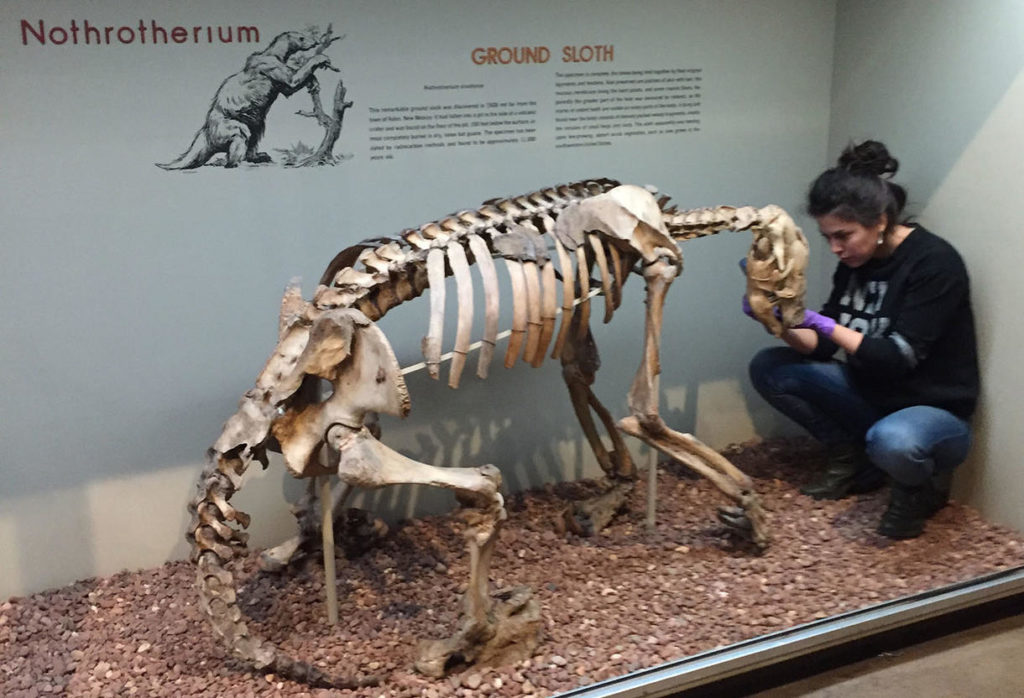Meat Eating Sloths

Last Wednesday (Oct. 20) was International Sloth Day, so let’s talk about one of my favorite mammals. Today, sloths are adorable and slow tree-dwellers. They use their curved claws to passively hang from branches. There are 6 living species of sloths that are divided into Two-Toed and Three-Toed varieties based on the number of fingers (not toes).
Sloths move so slowly that moss can grow on their fur. That moss is eaten not only by the sloths, but also by a type of moth that eats only that moss. Their slow movement and algae covered fur help camouflage them in the trees. And even though sloths are not able to walk on the ground very well, they can swim, as can be seen in this clip from BBC’s Planet Earth II.
Sloths weren’t always so small and slow. During the Pleistocene (2.58 million – 11,700 years ago), they were giants. Megatherium, the giant ground sloth, was one of the largest land mammals to have existed, and measured 6m (20ft) in length. It lived in South America and was thought to be an herbivore, just like its modern relatives.

But, according to a [new study], not all extinct sloths were solely plant-eaters. The study examined the ratio of nitrogen isotopes in the hair of the extinct sloths Mylodon and Nothrotheriops and in several extant mammals. Nitrogen is an atom that is present in different food sources and in the proteins that make up our bodies. As animals eat different foods, different types of Nitrogen (different isotopes*) are used to make the necessary proteins. Measuring the amount of different isotopes of nitrogen in the proteins can tell us what kinds of foods animals were eating.

The study found that Mylodon’s isotopes were more similar to present-day omnivores (animals that eat meat and plants) and that Nothrotheriops was most similar to present-day herbivores (animals that only eat plants). It’s really interesting to see how our ideas of the past can change with new analyses. And how diets, especially in extinct animals, can be more complicated than they seem.
If you’d like to read more about sloths – do an internet search for “sloths and avocados” and you’ll find information on how giant ground sloths helped spread avocados around Central America.
*Atoms are made of neutrons, protons, and electrons. Isotopes are atoms with different numbers of neutrons, but the same number of protons. For example, a nitrogen atom has 7 protons and usually 7 neutrons. A stable isotope of nitrogen will have 7 protons and 8 neutrons.